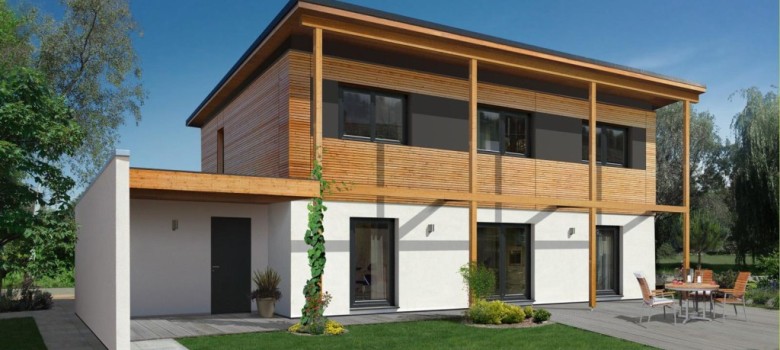
Put simply, a Passivhaus is one that is extremely well insulated, and uses superior design to maximise the efficiency of the property. They typically use just a fraction of the heating of the average home to stay warm.
To maintain a constant temperature in a property, you need to ensure that heat entering the property via sunlight (solar gain) or transmitted with the heating system, is equal to the heat leaving the property, (usually via the loft, walls, floors and draughts).
So of course, if there is less heat leaving the property, then less will be required to maintain the temperature. But Passivhaus ideas are not just about increasing efficiency; they are also about using natural light and ventilation to create a more comfortable property. A super insulated and draught proofed home can actually be very stuffy and not that pleasant. A Passivhaus uses ventilation in combination with heat recovery systems to ensure a well ventilated but also a super-efficient property.
How does this compare with the Code for Sustainable Homes (CSH)?
All new build properties in the UK must meet a certain code for sustainability (even those properties qualifying as Passivhaus), typically level 3 on the CSH scale. Passivhaus has much higher standards than this in terms of energy efficiency, but it does not consider sustainability of the materials used, longevity, or carbon emissions.
This is one of the main criticisms of the Passivhaus ideal, that it takes a very narrow view of a home and energy efficiency. Of course, as all homes must be built to the CSH code anyway, it may be a slightly moot point. If you want to add a solar system to meet the CSH code, you can. If you want to use a sustainable source for your building materials, you can. The standard simply underpins the efficiency of the property.
The new Level 6 CSH code that is expected to become mandatory in 2018 will move even further towards ultra-energy efficient properties like Passivhaus, as well as include other demanding sustainability requirements. CSH however, does not consider air tightness and thermal comfort in the same way as Passivhaus, (CSH uses SAP methodology, which tends to excludes some aspects of air tightness and the building fabric) so there is definitely something to be said for the Passivhaus standard.
Do you need to heat a Passivhaus?
Most Passivhaus properties do not have a conventional heating system. The heat demand of the property is so low that it is not necessary. The best properties take advantage of the heat given off by appliances, lighting, and even the human body, to help minimise any heating that is required. Usually a small air heating unit or heat pump is used to provide heating during the coldest parts of the year, but this is absolutely minimal.
What materials are used in a Passivhaus?
Triple glazing comes as standard, whilst highly energy efficient composite doors are also used. There is a big focus on natural light, meaning that large glass windows and walls are often used. Every aspect of the property, from design onwards, focuses on efficiency – something that is not normally seen with British properties.
How much does a Passivhaus cost, and how much will I save?
There are around 30,000 Passivhaus properties around the world, including both new build and retrofitted properties. And whilst they can be more expensive than a normal home, they also offer a level of unprecedented comfort. They should save you lots of money on heating as well – if a typical modern home costs £100 a month to heat, a similarly sized Passivhaus should cost £10. You can see that initial costs to construct will probably be recovered through the savings in heating costs.
So how much more does a Passivhaus cost?
The general consensus is that they cost around 20% more as a new build project compared to a standard construction property. Retrofit costs will vary depending on the initial construction. You must remember to factor in accreditation costs and testing and evidence gathering, which could add up to several thousand pounds.
Going on to build a Passivhaus can really be worthwhile however; as the added comfort and savings will be experienced for years to come. In addition, looking at energy prices over the past 10 years or so, that have risen on average 10% per year, you would think that energy prices will follow a similar trend going forward, therefore the yearly savings should be considerably larger even in the near future.
Lifestyle is important too
It is important to note that whilst Passivhaus will cut heating costs drastically, it will not in itself cut appliance use. Behaviour plays a very important role in cutting energy use, and only so much can be technologically based.












One Comment